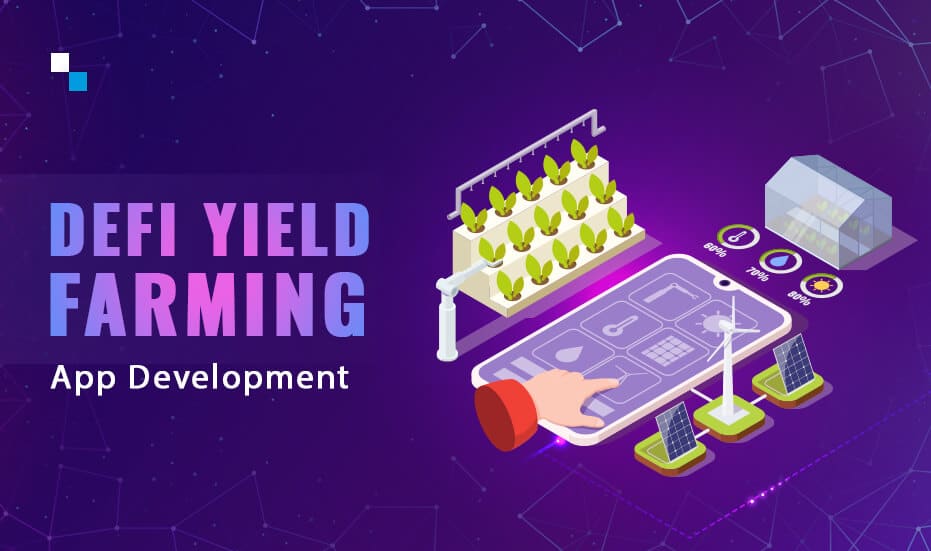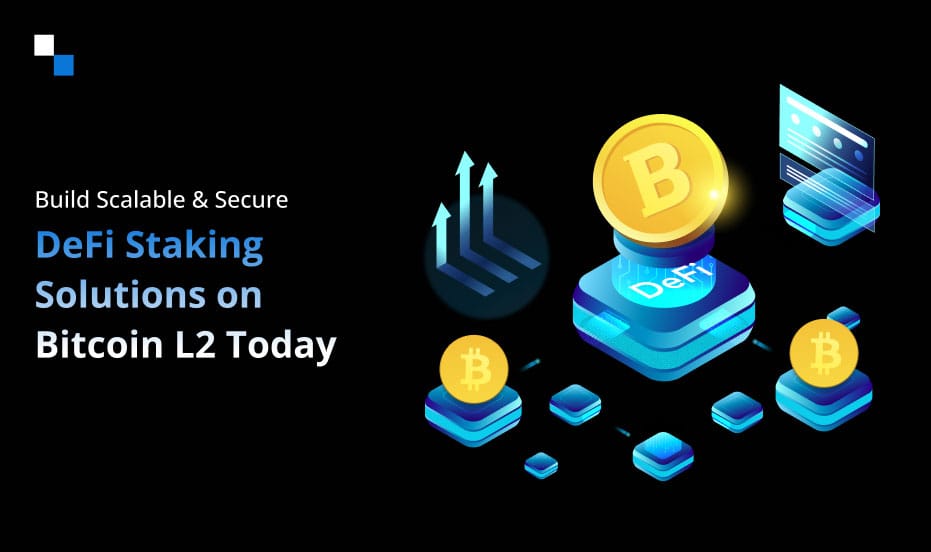
Unlocking Growth Opportunities for Emerging Artists with NFT Art Marketplace Development
May 1, 2023
How Blockchain Technology Enables Asset Tokenization and Improves Asset Liquidity
May 1, 2023DeFi, or Decentralized Finance, has gained significant attention in recent years as it offers innovative ways for users to access financial services without relying on traditional intermediaries. One of the popular use cases of DeFi is yield farming, which involves leveraging crypto assets to generate passive income by providing liquidity to decentralized protocols. If you want to venture into DeFi Yield Farming Development, the blog will help you immensely to understand the basics of yield farming. Read on!
What is DeFi Yield Farming?
DeFi yield farming, also known as liquidity mining, is a popular concept in the world of Decentralized Finance (DeFi) where users can earn rewards by providing liquidity to decentralized protocols. In simple terms, yield farming involves depositing funds into a liquidity pool, which is a smart contract that holds assets and provides liquidity for a particular decentralized platform, typically a decentralized exchange (DEX) or a lending/borrowing platform. In return for depositing funds into the liquidity pool, users receive tokens as a reward, which can be traded or used within the ecosystem.
The goal of yield farming is to earn a passive income by utilizing idle assets to provide liquidity to DeFi protocols and earn rewards in the form of tokens. These rewards can be in the same token that is being deposited into the liquidity pool or a different token, depending on the protocol’s design. Yield farming allows users to earn additional tokens on top of any trading fees or interest generated by the protocol, potentially increasing the overall returns on their crypto assets.
How Does a Yield Farming App Work?
Yield farming apps are decentralized finance (DeFi) platforms that allow users to earn rewards by providing liquidity to different protocols. Here’s a basic overview of how a yield farming app might work:
- A user chooses a DeFi protocol to provide liquidity to. This might be a lending platform, a decentralized exchange (DEX), or another type of DeFi application.
- The user deposits funds into the protocol. For example, they might deposit ETH and a stablecoin like USDC.
- The protocol rewards the user with a token that represents their share of the liquidity pool. For example, if the user deposits 50% ETH and 50% USDC, they might receive a token that represents their ownership of that pool.
- The user can then stake their liquidity pool token on the yield farming app. This allows them to earn additional rewards, such as governance tokens or other native tokens for the platform.
- The user can withdraw their liquidity and rewards at any time.
How To Build a DeFi Yield Farming App
Building a robust DeFi yield farming app requires careful planning, smart contract development, security considerations, and user experience design. Let’s explore the key steps to build a DeFi yield farming app from scratch.
Step 1:
Define the Objectives and Features of the Yield Farming App
The first step in building a yield farming app is to define the objectives and features of the application. Consider the following questions:
- What is the purpose of your yield farming app? Is it designed to provide a platform for users to deposit their assets and earn yield, or is it meant to be a marketplace for liquidity providers and borrowers to interact?
- What are the target users of your app? Are you targeting retail investors, institutional investors, or both?
- What crypto assets will be supported in your yield farming app? Will you support popular cryptocurrencies like Bitcoin (BTC) and Ethereum (ETH), or focus on specific tokens or assets?
- What are the key features you want to include in your app? Some common features of a yield farming app include depositing and withdrawing assets, providing liquidity to protocols, staking tokens, and earning rewards.
Defining the objectives and features of your yield farming app will help you create a clear roadmap for the development process.
Step 2:
Choose the Right Blockchain Platform
Choosing the right blockchain platform is a critical decision in building a robust DeFi yield farming app. The blockchain platform you choose will determine the scalability, security, and interoperability of your app. Some popular blockchain platforms for building DeFi apps include Ethereum, Binance Smart Chain, and Solana, among others.
Consider factors such as transaction fees, transaction speed, security features, community support, and developer tools when choosing the blockchain platform for your yield farming app. Each blockchain platform has its own advantages and disadvantages, so choose the one that aligns with your project’s requirements and goals. Taking the help of a reputed DeFi Yield Farming Development Services Company is recommended.
Step 3:
Develop Smart Contracts
Smart contracts are self-executing contracts that run on blockchain networks and are at the heart of any DeFi application. In the context of yield farming, smart contracts facilitate the exchange of assets, distribution of rewards, and management of user accounts.
Smart contracts for yield farming apps typically include functionalities such as depositing assets into liquidity pools, earning rewards, withdrawing assets, and staking tokens. The most commonly used smart contract standard for DeFi apps is the ERC-20 standard for tokens on the Ethereum blockchain. However, other blockchain platforms may have their own token standards.
It’s essential to thoroughly test your smart contracts to ensure they are secure and free of vulnerabilities that could be exploited by malicious actors. Conduct thorough code audits and security reviews to identify and fix any potential issues.
Step 4:
Implement User Interface and User Experience Design
The user interface (UI) and user experience (UX) design of your yield farming app play a crucial role in attracting and retaining users. A well-designed UI/UX can enhance the usability, accessibility, and overall satisfaction of your app.
Consider the following principles when designing the UI/UX of your yield farming app:
- Simplicity: Keep the design simple and intuitive to avoid confusion and reduce the learning curve for users.
- Accessibility: Ensure that your app is accessible to users with different abilities and devices.
- Consistency: Maintain consistency in the design elements, layout, and navigation across different sections of your app
Launch your DeFi Yield Farming Platform
Schedule Free DemoStep 5:
Integrate With a Liquidity Pool
Your app will need to integrate with a liquidity pool that provides the assets for yield farming. Uniswap and Sushiswap are popular decentralized exchanges that can be used for liquidity. You will need to connect your smart contracts to the liquidity pool to access the assets needed for yield farming.
Step 6:
Develop The Yield Farming Logic
The yield farming logic determines how rewards are distributed to liquidity providers. Code that calculates the rewards based on the amount of liquidity provided and the duration of the farming period is a prerequisite. The yield farming logic should also take into account the fees charged by the liquidity pool and other factors that affect the yield farming process.
Step 7:
Test the App
Testing is an important part of the DeFi Yield Farming Development process. You can use tools like Ganache, Hardhat, or Truffle to test your app before deploying it to the mainnet. Testing helps you identify bugs, errors, and other issues in your app and fix them before deploying your app to the mainnet.
Step 8:
Deploy The App to The Mainnet
Once your app is tested and ready to launch, you can deploy it to the mainnet.
Important Features of a Yield Farming App
There are some features that are essential to have in a yield farming app. Here are some important features of a yield farming app:
- Liquidity Pools: A yield farming app should provide liquidity pools for users to deposit their tokens. The liquidity pools should have an easy-to-use interface, with clear instructions for depositing and withdrawing tokens.
- Staking Rewards: A yield farming app should offer staking rewards for users who lock their tokens in the platform. Staking rewards incentivize users to hold their tokens on the platform and can be distributed in the form of the platform’s native token or other tokens.
- Automated Market Maker (AMM): An automated market maker is an algorithm that creates a market for a specific pair of tokens. A yield farming app should have an AMM that facilitates the exchange of tokens within the platform. AMMs can help ensure that liquidity is always available for trades and can help reduce the price slippage.
- Yield Farming Strategies: A yield farming app should have multiple yield farming strategies for users to choose from. Yield farming strategies can include providing liquidity to a specific liquidity pool, staking specific tokens, or providing liquidity to a farming pool.
- Token Swapping: A yield farming app should allow users to swap their tokens with ease. Token swapping should be integrated into the platform and should allow users to swap tokens with minimal slippage.
- Security: Security is paramount in DeFi. A yield farming app should be built on a secure blockchain platform and should have robust security measures in place to protect users’ funds. These measures can include smart contract audits, two-factor authentication, and multi-signature wallets.
- User Interface: A yield farming app should have a user-friendly interface that is easy to navigate. The interface should be intuitive, with clear instructions for users to deposit, withdraw, and stake their tokens.
Final Words
Do you want to venture into DeFi yield farming development? Choose the right company that has experience and expertise in the domain. Antier, is a dedicated DeFi Yield Farming Development Company that has worked with a global clientele to provide exceptional solutions!



